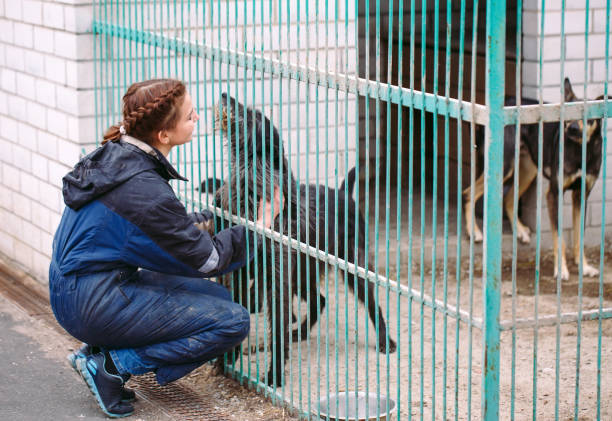The Effect Of Familiarity On Behavior Of Kennel Housed Dogs During Interactions With Humans

Human contact appears to be a highly valued resource for domestic dogs but it is unclear what type of human contact they prefer and what factors affect individual differences in such preferences. This study assessed the effect of familiarity of the human on duration of interaction by two samples of kennelled dogs: dogs in rehoming (RH) kennels (N = 25; mostly crossbred) entering the kennel as adults, and dogs in long stay enriched (LSE) kennels (N = 23; Labrador Retrievers, Miniature Schnauzers, Cocker Spaniels), born on site or brought in at approximately 9 weeks old. Volunteers (either unfamiliar or familiar to each dog) entered the pen and sat for 10 min: if the dog was within arm’s reach (‘next to’) the volunteer petted and spoke to the dog, but otherwise the dog was ignored. During the first 2 min of interaction, RH dogs spent longer within arm’s reach and orientated towards familiar (F) people than unfamiliar (UF) people. In the 8–10 min period, these dogs spent most time within arm’s reach but orientated away from people, irrespective of whether they were UF or F. The LSE dogs showed no significant difference between UF and F in time spent at any of the distance categories. However, when comparing the first with the third session of interaction with the same person (UF becoming F), LSE dogs spent more time within arm’s reach and orientated towards them in the first three minutes of interaction when UF, whilst spending longer far away from them when F at 9–12 min. Breed differences (LSE only) were evident at 9–12 min, and only when the person was familiar. The behaviour of the RH dogs suggested that they valued familiar and unfamiliar contact equally, but with unfamiliar people were more alert to their surroundings. LSE dogs appeared to prefer novel people, perhaps because they received high levels of human contact daily. Overall, preference for familiar vs. unfamiliar human contact appeared to be affected more by environment and past experience than breed.
Pullen, A.J., Merrill, R.J.N., and Bradshaw, J.W.S. (2012). The effect of familiarity on behavior of kennel housed dogs during interactions with humans. Applied Animal Behaviour Science, 137, 66-73.
Photo: iStock.com/davit85
View ResourceTopic(s): Behavior, Dog to People - Positive Caretaker Interactions, Shelter and Rescue, Social Interactions
